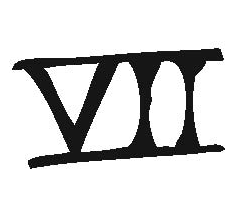Ravens and crows have always held a fascination for me. In my writing processes I spend a great deal of time walking, (and thinking), and I try to do that deep in nature, alone. Very often, on these walks, I am watched by a crow, or a raven, depending on the landscape, but this has never been a source of worry for me despite the general perception of these beautiful birds as feeders on carrion, (the decaying flesh of dead animals), or soul-stealers who will whisk you away to the spirit world. In my experience, they bring peace, and even seem keen to be part of the silent, contemplative creative activity.
In Shakespeare’s Othello, it is said that the raven flies “o’er the infected house”, and this has always had a strange resonance for me. Not because I see the description as relating to a specific house or location, but because I see it in much wider terms. If the raven flies in the skies above, then the infected house is Earth itself, with all its sorrows, its difficulties, its injustices and its horror.
The history of the relationship between humans and crows or ravens is characterised by ambivalence. From being the instrument of God in the Old Testament of the Christian Bible (“You shall drink from the brook, and I have commanded the ravens to feed you there” 1 Kings 17:4), through to Shakespeare’s assertion that ravens precede the appearance of death or evil intent, the great black bird has inhabited every space from saint to sinner.
These are clever birds, able to hunt in packs, to adapt to ever-changing environments; to be inventive and ingenious, to be cheeky, callous, unreliable and shameless, and yet also feature amongst the few species on Earth who mate for life. If that isn’t a mirror image of human I don’t know what is.
Which brings me to my favourite raven story. There is a Ukrainian legend that suggests the birds were once multi-coloured with beautiful singing voices. After the Fall of Angels, their feathers turned to black and their voice became the now familiar caw. When Paradise is restored to Earth, so too will the ravens’ original
beauty be restored to them. I identify with this story because it is linked so closely with the human story: childhood has a degree of innocence to it that is not repeated in later life as the inevitable moral dilemmas and unpredictability of human interaction takes hold. But there is still hope, still a shot at redemption. There has to be, because without it, the Tears on Earth’s Face will never be gently dried, and the weeping will be forever.
These are clever birds, able to hunt in packs, to adapt to ever-changing environments; to be inventive and ingenious, to be cheeky, callous, unreliable and shameless, and yet also feature amongst the few species on Earth who mate for life. If that isn’t a mirror image of human I don’t know what is.
Which brings me to my favourite raven story. There is a Ukrainian legend that suggests the birds were once multi-coloured with beautiful singing voices. After the Fall of Angels, their feathers turned to black and their voice became the now familiar caw. When Paradise is restored to Earth, so too will the ravens’ original
beauty be restored to them. I identify with this story because it is linked so closely with the human story: childhood has a degree of innocence to it that is not repeated in later life as the inevitable moral dilemmas and unpredictability of human interaction takes hold. But there is still hope, still a shot at redemption. There has to be, because without it, the Tears on Earth’s Face will never be gently dried, and the weeping will be forever.

 RSS Feed
RSS Feed
